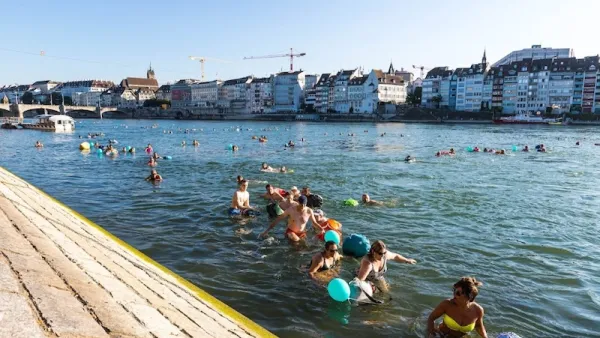Concerned about becoming a "western Detroit," the city of Reno, built around the gambling industry, seeks to shake off that trademark with new investments in other industries and amenities.
Like other cities built largely around a single industry, Reno has struggled to regain its footing during the United States' shaky recovery. As gambling-based tourism declined during the recession, so have Reno's fortunes. Many, like Bret Simmons of the University of Nevada, Reno, see gambling as unsustainable. "Those days are gone," he states. "Gaming is not the industry that's going to take us to the future." Now, as Micheline Maynard of the The Atlantic Cities writes, the "biggest little city in the world" is looking to change its debauched image to realign itself along more 'livable' principles.
With an unemployment rate of nearly 12%, Reno has began to embrace new sectors of the economy, ones that cater to both the many residents of Reno as well as the continuing flow of tourists to the Lake Tahoe region, in hopes of stimulating new economic growth. One such sector is that of the restaurant and entertainment trade, with the development of restaurants and bars showcasing local flavors and culture.
Additionally, like many other cities, Reno has also chosen to focus increasing attention on its university. Universities not only bring more people, and their money, into a community, but, more importantly, can also generate the high-quality research and technology-based jobs sought after by most cities.
Perhaps Reno resident and local chef Mark Estee speaks of the city's new vision best, stating, "It's a partnership of the whole city coming together. We want people to understand that Reno is more than just gaming."
FULL STORY: Reno Just Wants to Be Normal

Maui's Vacation Rental Debate Turns Ugly
Verbal attacks, misinformation campaigns and fistfights plague a high-stakes debate to convert thousands of vacation rentals into long-term housing.

Planetizen Federal Action Tracker
A weekly monitor of how Trump’s orders and actions are impacting planners and planning in America.

San Francisco Suspends Traffic Calming Amidst Record Deaths
Citing “a challenging fiscal landscape,” the city will cease the program on the heels of 42 traffic deaths, including 24 pedestrians.

Defunct Pittsburgh Power Plant to Become Residential Tower
A decommissioned steam heat plant will be redeveloped into almost 100 affordable housing units.

Trump Prompts Restructuring of Transportation Research Board in “Unprecedented Overreach”
The TRB has eliminated more than half of its committees including those focused on climate, equity, and cities.

Amtrak Rolls Out New Orleans to Alabama “Mardi Gras” Train
The new service will operate morning and evening departures between Mobile and New Orleans.
Urban Design for Planners 1: Software Tools
This six-course series explores essential urban design concepts using open source software and equips planners with the tools they need to participate fully in the urban design process.
Planning for Universal Design
Learn the tools for implementing Universal Design in planning regulations.
Heyer Gruel & Associates PA
JM Goldson LLC
Custer County Colorado
City of Camden Redevelopment Agency
City of Astoria
Transportation Research & Education Center (TREC) at Portland State University
Jefferson Parish Government
Camden Redevelopment Agency
City of Claremont




























